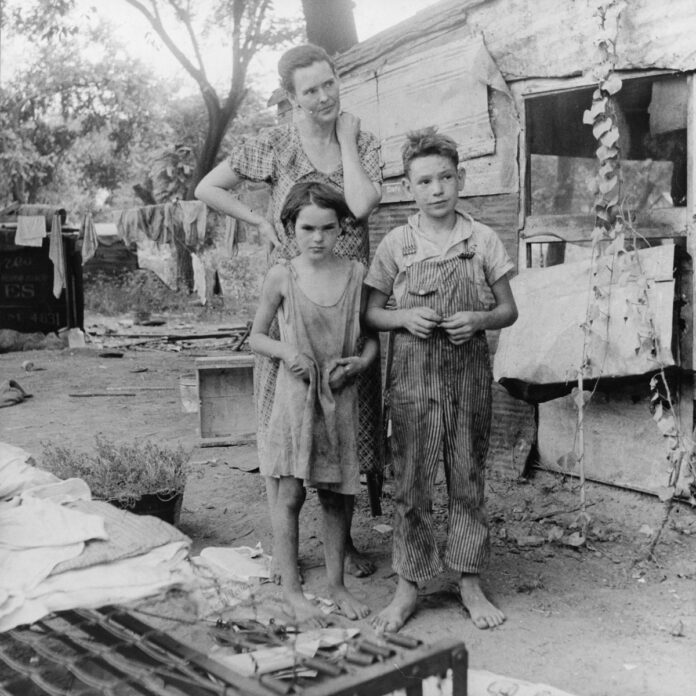Have you ever looked back at the black and white photos taken during the Great Depression? People waiting in lines at soup kitchens. Displaced families living in a ramshackle one-room shanty. People unable to find work. Lines outside of banks during bank runs.
For about 50 years following World War II, that life disappeared. Manufacturing boomed, providing jobs for most anyone who wanted one. Millions moved into the middle class and bought cars and homes, something that once would have been considered impossible. Government brought electricity to rural areas, as was the telephone. Radio and then TV allowed news and information to be broadcast across the nation, and the news was objective. We eradicated diseases like polio and smallpox. Segregation ended. Food was plentiful and children grew larger and stronger. Lifespans lengthened and infant mortality dropped. President Eisenhower created the Interstate highway system. Jet airplanes connected distant cities, and our military won the Cold War.
Today, I look back at the past 50 years, and I wonder what happened to that era when every generation did better than their parents? What was the turning point? When did our country’s arc reach its peak and turn downward?
Was it the Vietnam War? Was it the Arab Oil Embargo? Maybe it was the Iranian Hostage Crisis? Perhaps the fall started when President Clinton got oral sex in the oval office and was impeached? I can’t help but feel we are heading backwards.
100 Years After the Great Depression
Wall Street crashed on Thursday, October 24, 1929, in what is generally considered the start of the Great Depression, from which the U.S. did not fully recover for 10 years. I can’t help but wonder if we are building up to a similar crisis, nearly 100 years later. The parallels are there. For example:
- They had severe droughts leading to the dust bowl. We have severe droughts leading to less food production.
- They had a breakdown of international trade. Right now, our international trade is dysfunctional.
- The Roaring Twenties were a period of excess after WWI and the Spanish Flu. We have similar exuberance in the financial markets after our own pandemic.
- They had people buying stocks on margin. We have people buying cryptocurrencies on margin.
- They had protectionist policies and tariffs; we have protectionist policies and tariffs.
There are more parallels. Do your own research. Come to your own conclusions. Think about what might happen and what you can do to protect yourself and your family.
Here are two recent media stories that paint a picture of where we might be heading:
Life in a Failed State
As its currency value decreases by 90 percent, the citizens of Lebanon find themselves waiting in line for everything: Gasoline, food, medicine. Adding insult to injury, banks will not let people withdraw their funds, meaning they had to watch its value decrease, unable to spend it.
Life During a Social and Economic Collapse
It’s not just places like Lebanon, Cuba and Venezuela that have problems. South Africa is experiencing a “social and economic collapse in South Africa that has been escalating over the past couple weeks.” The author of this article says, “the South African situation is a more exaggerated version of what is happening in America, and we need to consider if it is merely a preview of future events.”
Armed South Africans are protecting their neighborhoods when the police cannot do so. How long will it be before we are driven to similar actions in the U.S.?







